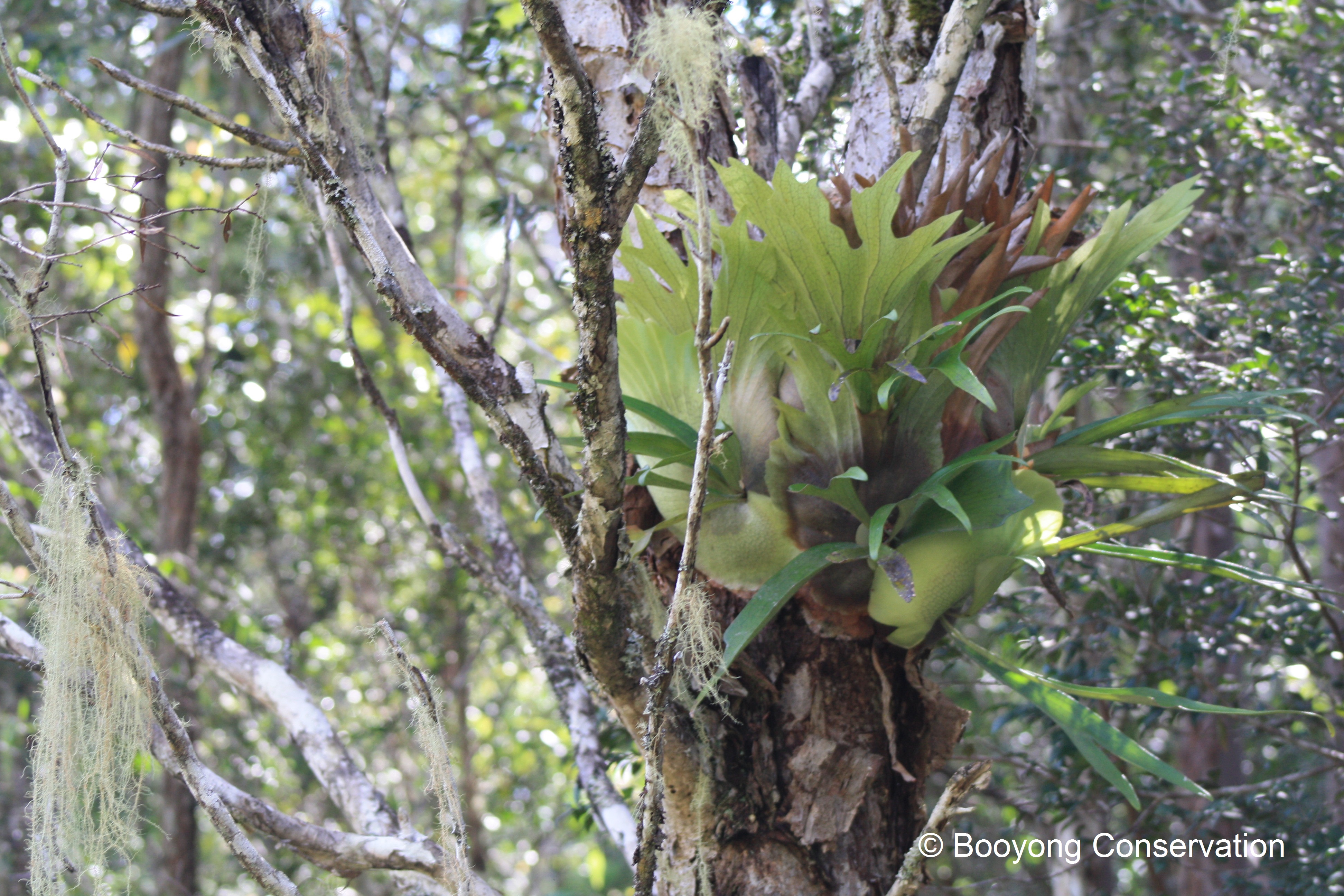Common Name: Staghorn
Scientific Name: Platycerium superbum
There are some magnificent native staghorns located throughout the conservation area, especially near the waterways high up in the tree canopies.
Staghorn fern is an Australian native plant that has been declared noxious on Lord Howe Island, where it is not endemic and has become invasive. The Platycerium species includes a group of 15 species originating from Africa, Madagascar, Asia, Australia, Indonesia, the Philippines and South America. Australia has 4 species of staghorn which grow well in tropical and subtropical regions of the Eastern Australia Coast.
The large fronds are designed to collect fallen leaves and insects which provide potassium and other nutrients to the plant. The width of a mature plant can reach 1m and it’s root like structures attaches to the bark of trees as per the photo shown. The antler like fronds can grow to 2m in length and are responsible for the name ‘Staghorn’.
This plant reminds me of my childhood, staghorns were commonly mounted onto hardboards due to their heavy weight and very popular in household gardens. Because they couldn’t collect fallen leaves when placed on a wall to collect potassium people often placed banana skins in them.
Propogation is possible and is achieved by collecting spores. For more detailed information about propogating this fern please go to the Platycerium bifurcatum page. Please don’t remove any plants or spores from the conservation area. At Booyong we have plans to explore propagation of native plants and seeds as expressed in the Conservation agreement in the future and will share this information with you as it develops over time.
